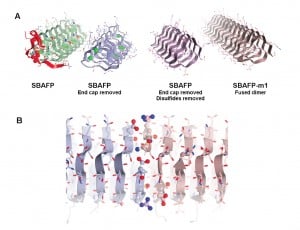A new form of carbon produced by very slowly releasing benzene compressed at 200,000 times atmospheric pressure may be the strongest material possible.
Nanothreads formed from smallest possible diamonds


A new form of carbon produced by very slowly releasing benzene compressed at 200,000 times atmospheric pressure may be the strongest material possible.

Advanced aberration-corrected scanning transmission electron microscopes in UK facility provide atomically precise characterization of a variety of materials to guide R&D in alloys, drug delivery, lasers and other areas.

Gold nanotubes engineered to a specified length, modified surfaces, and to have other desirable characteristics showed expected abilities to enter tumor cells in laboratory studies, and to distribute to tissues within live mice as intended.

The Theory Prize was given for research into diamond nanoparticles; the Experimental Prize was given for development of scanning tunneling microscope (STM) technology.

Single-molecule spectroscopy makes possible adding one rung at a time to a foundational rung grafted to a surface to make a long nanotube scaffold of predetermined sequence.

A nanoporous form of graphene made by burning off other elements from an inexpensive polymer has been used to fabricate flexible supercapacitors via a process that can be scaled to industrial quantities to provide energy storage for wearable, flexible electronics.

Positioning two or more molecules along a long DNA strand can cause the DNA molecule to adopt different shapes if the molecules interact. Quickly and cheaply separating these shapes by a simple gel electrophoresis assay provides a wealth of information about how the molecules interact.

Design and computational simulation of amyloid proteins of diverse functions from diverse sources enable the self-assembly of proteins that could provide scaffolds for diverse applications.

RNA origami brings new dimensions to nucleic acid nanotechnology by exploiting the much greater variety of RNA structural motifs (compared to DNA) to do what cannot easily be done with DNA origami, like fold into predetermined nanostructures rapidly while being transcribed.

Iterative coupling, purification, and cyclization of a large collection of organic building blocks promises a vast array of complex small and medium sized molecules as candidates for drug discovery, catalysis, and nanotechnology.